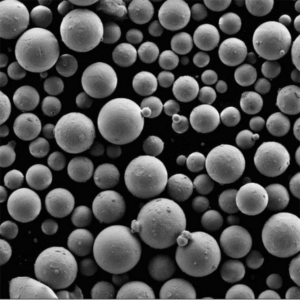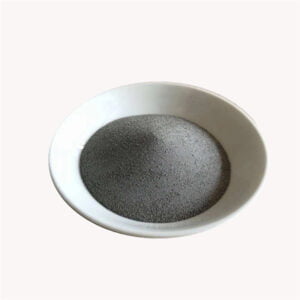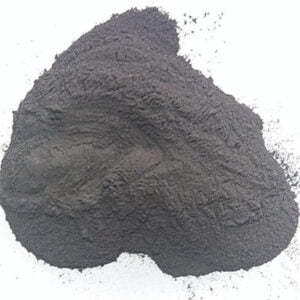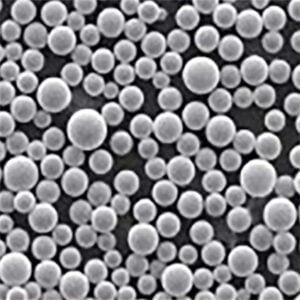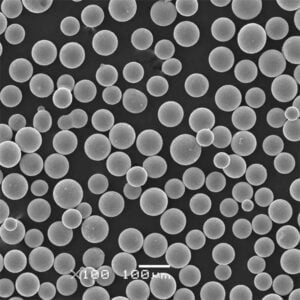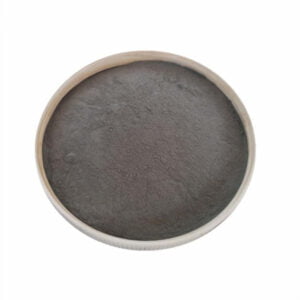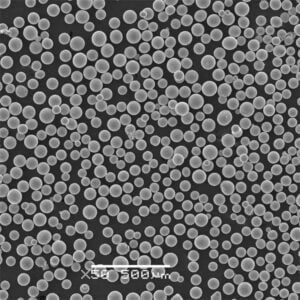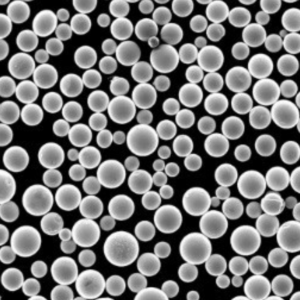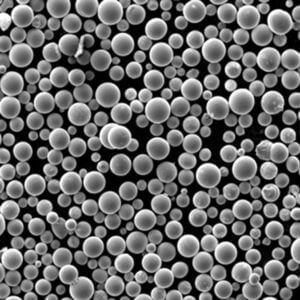Atomized Metal powder – En omfattande guide 2025
Innehållsförteckning
Vad är atomiserat metallpulver?
Atomiserat metallpulver avser metallpulver som framställs genom atomisering, en process där smält metall omvandlas till fina droppar som stelnar till pulverpartiklar. Atomisering möjliggör produktion av metallpulver med exakta partikelstorlekar, former och kemiska sammansättningar.
Atomiserade metallpulver har många olika användningsområden inom additiv tillverkning, 3D-printing, formsprutning av metall, lödning, svetsning, termisk sprutning med mera. Den här artikeln ger en detaljerad guide till utrustning för atomiserad metall, inklusive typer, egenskaper, tillämpningar, specifikationer, leverantörer, installation, drift, underhåll med mera.
Atomiserad metallpulver sammansättning
Sammansättningen av finfördelat metallpulver bestäms av vilken typ av metall eller legering som finfördelas. Olika metaller och legeringar används beroende på de önskade egenskaperna hos slutprodukten. Här är en uppdelning av vanliga metaller som används för atomisering och deras egenskaper.
| Metall/legering | Sammansättning | Egenskaper |
|---|---|---|
| Aluminium (Al) | 99% Aluminium eller aluminiumlegeringar | Lätt, korrosionsbeständig, hög värmeledningsförmåga. |
| Stål (Fe-C-legeringar) | Järn, kol, krom (olika legeringar) | Stark och hållbar, används inom fordons- och byggindustrin. |
| Koppar (Cu) | 99% Koppar eller kopparlegeringar | Utmärkt elektrisk och termisk ledningsförmåga, används inom elektronik och kablage. |
| Titan (Ti) | Ren titan eller legeringar (Ti-6Al-4V) | Högt förhållande mellan styrka och vikt, korrosionsbeständighet, används inom flyg- och medicinteknik. |
| Nickel (Ni) | Nickellegeringar (Inconel, Monel) | Beständighet mot höga temperaturer, används i turbiner och motorkomponenter. |
| Kobolt (Co) | Koboltlegeringar (Stellit, Haynes) | Slitstark, används i skärande verktyg och dentala/medicinska applikationer. |
Varför kompositionen är viktig
Sammansättningen av det atomiserade metallpulvret avgör dess slutliga egenskaper. Aluminium är till exempel utmärkt för lättviktsapplikationer, medan titan är perfekt när du behöver något starkt men ändå lätt för flyg- och rymdkomponenter. Att förstå sammansättningen kan hjälpa dig att välja rätt pulver för din specifika applikation.
Egenskaper för finfördelat metallpulver
När man väljer ett metallpulver för en viss applikation är det viktigt att förstå dess egenskaper. Dessa egenskaper påverkar allt från hur pulvret beter sig under bearbetningen till slutproduktens prestanda.
| Fastighet | Beskrivning |
|---|---|
| Fördelning av partikelstorlek | Spannet av partikelstorlekar, som påverkar flytbarhet och packningsdensitet. |
| Form | Kan vara sfäriska, oregelbundna eller flingliknande; sfäriska partiklar är idealiska för 3D-utskrift. |
| Renhet | Pulver med hög renhet är avgörande för applikationer som kräver exakt prestanda. |
| Täthet | Förhållandet mellan massa och volym, som påverkar hållfasthet och materialanvändning. |
| Flytbarhet | Pulvret flyter lätt, vilket är viktigt för processer som sintring. |
| Hårdhet | Ett mått på ett materials motståndskraft mot deformation, relevant i slitagetillämpningar. |
| Oxideringsbeständighet | Pulverets förmåga att motstå oxidation, vilket är avgörande för lagring och bearbetning. |
| Termisk konduktivitet | Hur väl materialet leder värme, vilket är avgörande för elektronik och kylflänsar. |
Betydelsen av fastigheter
Tänk dig att du ska 3D-printa en detalj som måste vara både stark och lätt. Om du väljer ett pulver med fel partikelstorlek eller flödesförmåga kan du få problem med utskriftskvaliteten eller den slutliga delens styrka. Det är därför det är så viktigt att förstå egenskaperna hos finfördelat metallpulver.
Tillämpningar av finfördelat metallpulver
Atomiserade metallpulver används inom många olika branscher tack vare sin mångsidighet, precision och unika egenskaper. Här är några av de vanligaste användningsområdena:
| Industri | Tillämpning |
|---|---|
| Additiv tillverkning | Metallpulver används vid 3D-printing för att skapa komplexa, höghållfasta delar. |
| Pulvermetallurgi | Pulver pressas och sintras för att skapa delar som kugghjul, lager och filter. |
| Ytbeläggningar | Används vid termisk sprutning för att belägga ytor med ett skyddande eller funktionellt skikt. |
| Fordon | Metallpulver används för att tillverka lätta och höghållfasta motorkomponenter. |
| Flyg- och rymdindustrin | Högpresterande pulver som titan används till turbinblad och konstruktionsdelar. |
| Medicinsk | Pulver används för att tillverka biokompatibla implantat och kirurgiska verktyg. |
| Elektronik | Används vid tillverkning av elektriska kontaktdon och kylflänsar. |
Varför dessa applikationer är viktiga
Tänk på fordonsindustrin. Dagens bilar är lättare och mer bränsleeffektiva än någonsin tidigare, delvis tack vare användningen av lättviktsmetallpulver i motorkomponenter. På samma sätt kan man inom det medicinska området med hjälp av finfördelade metallpulver skapa skräddarsydda implantat som passar perfekt till en patients anatomi.
Specifikationer och standarder för finfördelat metallpulver
När man köper eller arbetar med atomiserat metallpulver är det viktigt att känna till de specifikationer som definierar dess prestanda och kompatibilitet. Dessa specifikationer kan variera beroende på bransch och applikation, men följande är några av de vanligaste.
| Specifikation | Beskrivning |
|---|---|
| Partikelstorleksintervall | Vanligtvis från 10 mikrometer till 150 mikrometer, beroende på applikation. |
| Pulverform | Sfärisk eller oregelbunden, där sfärisk är att föredra för additiv tillverkning. |
| Renhet | Höggradigt rena kvaliteter är nödvändiga för kritiska tillämpningar inom t.ex. flyg- och medicinteknik. |
| Täthet | Bulk- och tappdensitet påverkar hur pulvret packas och sintras under bearbetningen. |
| Flödeshastighet | Mäts i sekunder per 50 g, vilket indikerar hur lätt pulvret flyter. |
| Standarder | ASTM-, ISO- och AMS-standarder anger kvalitets- och testmetoder för metallpulver. |
Att välja rätt specifikationer
Låt oss säga att du är involverad i 3D-utskrift av flygkomponenter. Du kommer sannolikt att behöva ett pulver med ett mycket specifikt partikelstorleksintervall och renhet för att säkerställa att slutprodukten uppfyller säkerhets- och prestandastandarder. Att veta vad man ska leta efter när det gäller specifikationer är avgörande för framgång.
Leverantörer och priser på Atomiserat metallpulver
Priset på finfördelat metallpulver varierar mycket beroende på typ av metall, kvalitet och leverantör. Här är en titt på några allmänna prisklasser och leverantörer.
| Leverantör | Land | Material | Prisintervall (per kg) |
|---|---|---|---|
| Met3dp | Kina | Järn, koppar, rostfritt stål, titan, Inconel | $10 – $50 |
| Valimet | USA | Aluminium, titan | $30 – $300 |
| LPW-teknik | STORBRITANNIEN | Nickellegeringar, titan | $100 – $500 |
| Tekna | Kanada | Sfärisk titan, aluminium | $200 – $700 |
| Sandvik | Globalt | Olika legeringar | $150 – $600 |
Faktorer som påverkar prissättningen
Flera faktorer påverkar kostnaden för atomiserade metallpulver, inklusive typen av atomiseringsprocess (gasatomisering är dyrare än vattenatomisering), den metall eller legering som används och den renhet som krävs. Till exempel är titanpulver betydligt dyrare än järnpulver på grund av dess högre smältpunkt och mer komplexa finfördelningsprocess.
Hantering, förvaring och säkerhetsinformation för finfördelat metallpulver
Korrekt hantering och lagring av finfördelat metallpulver är avgörande för att upprätthålla kvalitet och garantera säkerhet. Metallpulver kan vara farligt om det inte hanteras korrekt, med risker som inandning, förbränning och kontaminering.
| Övervägande | Riktlinjer |
|---|---|
| Hantering | Använd alltid personlig skyddsutrustning (PPE), t.ex. handskar och masker, för att undvika direktkontakt eller inandning. |
| Förvaring | Förvaras svalt, torrt och åtskilt från antändningskällor. Håll behållare förslutna för att undvika kontaminering. |
| Brand- och explosionsrisk | Vissa metallpulver (t.ex. aluminium och titan) är mycket brandfarliga i pulverform. Undvik att skapa dammoln och se till att ventilationen är tillräcklig. |
| Fuktkontroll | Metallpulver, särskilt sådana som är benägna att oxidera (t.ex. järn), ska förvaras i en miljö med låg luftfuktighet. |
| Avfallshantering | Kassera oanvänt pulver i enlighet med lokala miljöbestämmelser, eftersom vissa pulver kan vara farliga för miljön. |
Varför säkerhet är viktigt
Hantering av metallpulver är som hantering av fyrverkerier - säkert och kontrollerat under rätt omständigheter, men farligt om det hanteras felaktigt. Till exempel är aluminium- och titanpulver benägna att förbrännas när de utsätts för luft under felaktiga förhållanden. Därför är korrekta säkerhetsprotokoll ett måste.
Inspektions- och provningsmetoder för finfördelat metallpulver
Att säkerställa kvalitet och konsistens hos finfördelat metallpulver är avgörande för dess prestanda i olika applikationer. Inspektions- och testmetoder används för att verifiera att pulvret uppfyller de nödvändiga specifikationerna.
| Testmetod | Syfte |
|---|---|
| Analys av partikelstorlek (PSA) | Säkerställer att pulvret har rätt partikelstorleksfördelning. |
| Röntgendiffraktion (XRD) | Analyserar pulvrets kristallina struktur för fasidentifiering. |
| Skannande elektronmikroskopi (SEM) | Ger detaljerade bilder av pulvrets yta för att undersöka form och morfologi. |
| Test av kemisk sammansättning | Verifierar pulvrets elementära sammansättning och säkerställer renhet. |
| Test av flödeshastighet | Mäter hur snabbt pulvret flyter, vilket är viktigt för processer som 3D-printing. |
| Tappdensitetstest | Bestämmer hur tätt pulvret packas, vilket påverkar sintringen och den slutliga detaljens densitet. |
Vikten av att testa
Tänk på testning som kvalitetskontroll för en gourmetkock. Precis som en kock smakar och justerar kryddor måste tillverkare testa pulver för partikelstorlek, sammansättning och flöde för att säkerställa att slutprodukten uppfyller prestanda- och säkerhetsstandarder.
För- och nackdelar med finfördelat metallpulver
Precis som alla andra material har atomiserat metallpulver sina fördelar och begränsningar. Låt oss ta en djupare titt på några av de viktigaste för- och nackdelarna.
| Proffs | Nackdelar |
|---|---|
| Hög precision | Atomiserade pulver möjliggör exakt kontroll över partikelstorlek och -form, vilket gör dem idealiska för additiv tillverkning. |
| Mångsidighet | Kan användas inom ett brett spektrum av industrier, från flyg- och rymdindustrin till elektronikindustrin. |
| Hög renhet | Atomiseringsprocesser kan producera mycket rena pulver, vilket är viktigt för kritiska applikationer. |
| Kostnad | Metallpulver av hög kvalitet, särskilt sådana som tillverkas av material som titan, kan vara dyra. |
| Säkerhetsrisker | Vissa pulver, t.ex. aluminium och titan, är mycket brandfarliga och kräver noggrann hantering. |
| Energiintensiv produktion | Atomiseringsprocessen, särskilt gasatomisering, kan vara energikrävande. |
Varför fördelarna väger tyngre än nackdelarna
Atomiserade metallpulver kan vara dyra och kräver noggrann hantering, men deras precision, mångsidighet och höga kvalitet gör dem oumbärliga i branscher där prestanda och tillförlitlighet inte är förhandlingsbara. Inom t.ex. flygindustrin väger möjligheten att skapa lätta men ändå starka delar av titanpulver mycket tyngre än kostnads- och säkerhetsaspekterna.
Vanliga frågor (FAQ) om finfördelat metallpulver
| Fråga | Svar |
|---|---|
| Vad används finfördelat metallpulver till? | Atomiserat metallpulver används inom branscher som additiv tillverkning, pulvermetallurgi och ytbeläggningar. |
| Hur finfördelas metallpulver? | Metall finfördelas genom att smält metall sprutas genom ett munstycke och bryts ner i fina partiklar. |
| Är finfördelat metallpulver farligt? | Vissa pulver, t.ex. aluminium och titan, är brandfarliga och kräver noggrann hantering och förvaring. |
| Vad är skillnaden mellan gas- och vattenatomisering? | Gasatomisering ger jämnare, mer sfäriska pulver, medan vattenatomisering ger oregelbundna former. |
| Hur förvarar man finfördelat metallpulver? | Förvara på en sval, torr plats med minimal exponering för luft och fukt för att förhindra oxidation och nedbrytning. |
| Kan jag använda finfördelat metallpulver för 3D-utskrifter? | Ja, finfördelade metallpulver används ofta vid additiv tillverkning på grund av deras konsekventa partikelstorlek och form. |
Typer av utrustning för finfördelad metall
| Utrustning | Beskrivning |
|---|---|
| Gasatomisatorer | Använd inert gas (N2, Ar) med hög hastighet för att bryta upp smält metallström i fina droppar |
| Vattenförstärkare | Använda högtrycksvattenstrålar för att finfördela smält metall till pulver |
| Atomisatorer med roterande elektrod | Använd centrifugalkraften från en roterande metalltråd eller skiva för att sönderdela smält metall i droppar |
| Ultraljudsförstärkare | Använd ultraljudsvibrationer för att skapa kapillärvågor och sönderdela smält metallström |
| Centrifugalförstärkare | Smält metall som hälls på en roterande skiva bryts i droppar som slungas utåt av centrifugalkraften |
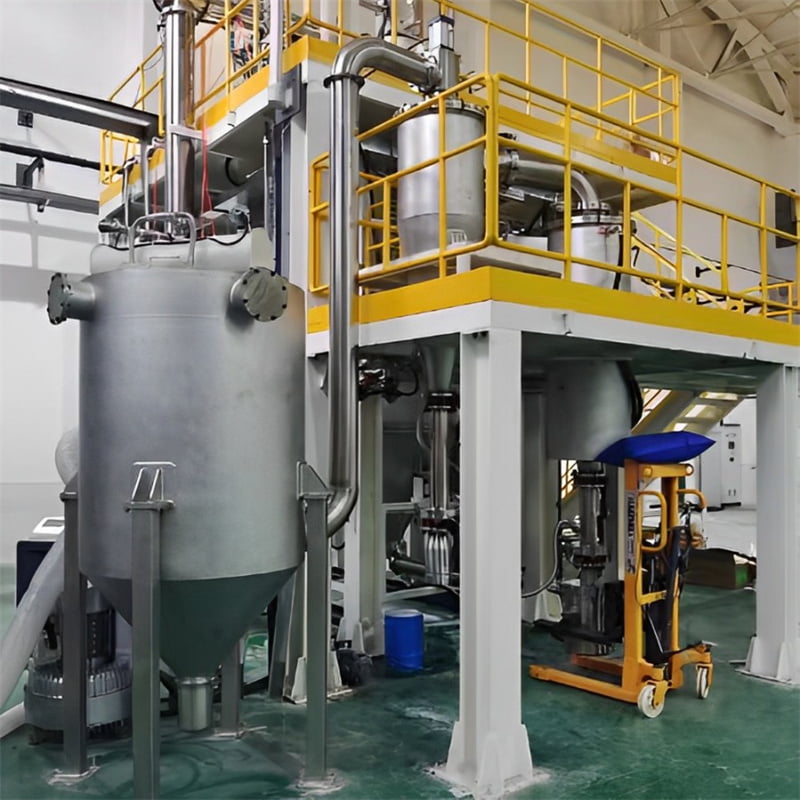
Egenskaper hos finfördelat metallpulver
| Karaktäristisk | Beskrivning |
|---|---|
| Partikelstorlek | Mikrometer till millimeter; styrs av parametrar för finfördelningsprocessen |
| Partikelns form | Sfärisk, oregelbunden eller satellitformad; beror på metod och förhållanden |
| Storleksfördelning | Kan göras mycket smal med hjälp av vissa finfördelningstekniker |
| Renhet | Hög renhet möjlig genom användning av raffinerad smält metallråvara |
| Täthet | Kan närma sig metallens teoretiska densitet |
| Flytbarhet | Påverkas av partikelstorlek, -form och -fördelning; viktigt för hanteringen |
| Sinterverksamhet | Fina pulver med stor ytarea sintras snabbt under kompaktering till fast metall |
Tillämpningar av finfördelat metallpulver
| Tillämpning | Detaljer |
|---|---|
| Fusion av metallpulverbädd | Finfördelade pulver som används vid 3D-printning med laser-/elektronstrålepulverbädd |
| Sprutning av bindemedel | Pulver av rostfritt stål, verktygsstål och aluminium för 3D-utskrift med bindemedelsstråle |
| Formsprutning av metall | Pulver av rostfritt stål, titan och aluminium blandas med bindemedel och gjuts |
| Termiska sprutbeläggningar | Fe-, Ni-, Co-, Cu- och legeringspulver som sprutas på ytor för slitage- och korrosionsskydd |
| Lödpasta | Ag-, Cu-, Ni-legeringspulver i pastaformuleringar för sammanfogning av metaller |
| Friktionsmaterial | Cu- och Fe-pulver förbättrar friktion och slitage i bromsbelägg och kopplingsbelägg |
| Svetsning | Atomiserade Ti- och Al-pulver tillsätts under bågsvetsning för att förbättra svetsegenskaperna |
| Pulvermetallurgi | Pressa och sintra finfördelade Fe-, stål- och Cu-pulver till nätformade komponenter |
| Magneter | Isolerade Fe-, ferritpulver som pressas till magneter och induktorer |
| Metallkatalysatorer | Brett utbud av legeringspulverkatalysatorer som används i kemisk industri |
Specifikationer för utrustning för finfördelat metallpulver
| Parameter | Typiskt intervall |
|---|---|
| Produktionskapacitet | 10-100 kg/timme |
| Gasförbrukning | 10-100 Nm3/hr argon eller kväve |
| Användning av kylvatten | 100-1000 L/min |
| Energiförbrukning | 50-500 kW |
| Golvytan | 100-500 kvadratmeter |
| Styrsystem | PLC, SCADA, dataövervakning |
| Säkerhetssystem | Gasdetektorer, brandsläckning, personlig skyddsutrustning |
| Hantering av smält metall | Launders, troughs, pouring systems |
| Puderkollektion | Cyclones, bag filters, screw conveyors |

Leverantörer och prissättning
| Leverantör | Utrustning | Prisintervall |
|---|---|---|
| Gasbarre | Gasatomisatorer | $500,000 – $2 million |
| Idra | Vattenförstärkare | $1 – 5 million |
| Kessenich | Roterande elektrod | $250,000 – $1 million |
| Sodick | Ultrasonic nozzle | $100,000 – $500,000 |
| AcuPowder | Centrifugal wheel | $50,000 – $250,000 |
Atomized metal equipment prices vary widely depending on capacity, automation features, ancillary systems, brand reputation and other factors. Budget at least $250,000 to $1 million for an industrial scale production unit.
Installation and Facilities
- Atomized metal equipment should be installed in a well-ventilated, temperature and humidity controlled production space.
- Provide sufficient overhead cranes, hoists and rigging gear for equipment installation and maintenance.
- Ensure adequate power supply, utilities and compressed air connections are in place.
- Have qualified personnel for equipment assembly, alignment, testing and commissioning.
- Design proper foundations, anchor bolts, equipment platforms for secure installation.
- Include dust collection ducting, cyclones and baghouse for collecting atomized metal powder.
- Install safety features like gas monitoring sensors, fire suppression systems.
- Allow enough free space for material handling, workflows and maintenance access.
Drift och underhåll
| Aktivitet | Detaljer | Frekvens |
|---|---|---|
| Inspektion av utrustning | Check fluid levels, leaks, unusual noise/vibration, safety devices | Dagligen |
| Övervakning av parametrar | Log process data like temps, pressures, flows, power | Continuous |
| Consumable replenishment | Refill cooling water, inert gas cylinders, lubricants | Efter behov |
| Housekeeping | Clean spills, empty dust collectors, general cleaning | Dagligen |
| Component replacement | Replace worn out nozzles, bearings, seals, filters | Per schedule |
| Kalibrering | Calibrate sensors, measurement devices, control systems | Quarterly |
| Major maintenance | Inspect major parts; repair/replace if needed | Årligen |
Proper operation and preventive maintenance as per manufacturer guidelines is key to maximizing equipment life and performance. Maintain detailed logs of all maintenance work.
Choosing an Atomized Metal powder Equipment Supplier
| Övervägande | Detaljer |
|---|---|
| Teknisk expertis | Long experience in atomization technology and metal powder production |
| Anpassning | Ability to customize equipment to meet specific production needs |
| Tillförlitlighet | Proven track record of robust, reliable equipment with low failure rates |
| Automatisering | Advanced control systems, data monitoring for optimized powder characteristics |
| Aftersales service | Installation support, operator training, service contracts for maintenance |
| Referenser | Positive feedback from existing customers on equipment quality and vendor reputation |
| Värde | Right balance of quality, performance and fair pricing |
| Local presence | Physical proximity for face-to-face meetings and quick response |
Evaluate vendors thoroughly on the above parameters before investing in atomized metal equipment. Weigh factors like quality, reliability, service over lowest cost while making a selection.
Pros and Cons of Atomized Metal Processes
Atomisering av gas
Proffs
- Produces highly spherical, smooth powders ideal for AM, MIM etc.
- Narrow particle size distribution possible
- Operates continuously with good productivity
- Lower capital cost compared to water atomization
Nackdelar
- Limited to smaller particle sizes, usually below 100 microns
- Requires large volumes of expensive inert gas
- Dust levels in work area may be high
Atomisering av vatten
Proffs
- Can produce a wide range of powder sizes including large diameters
- Lower gas consumption than gas atomization
- Denser powders compared to gas atomized
Nackdelar
- Less spherical particles, more satelliting
- Water treatment needed for atomizing water
- Oxide inclusions possible from water contact
Centrifugal atomisering
Proffs
- Simple mechanism with minimal utilities
- Compact design with lower capital costs
- Operates semi-continuously with good productivity
Nackdelar
- Begränsad kontroll över partikelstorleksfördelning
- Irregular, non-spherical particle shapes
- Contamination risk from disk wear over time
Limitations of Atomized Metal Processes
- High production costs especially for very fine metal powders
- Particle shape and size range constraints based on technique
- Requirement ofSpecialized equipment with controlled conditions
- High purity feedstock metals needed for pure powders
- Batch operation in some methods lowers productivity
- Post-processing like sieving often needed to control particle sizes
- Highly skilled personnel needed to operate equipment
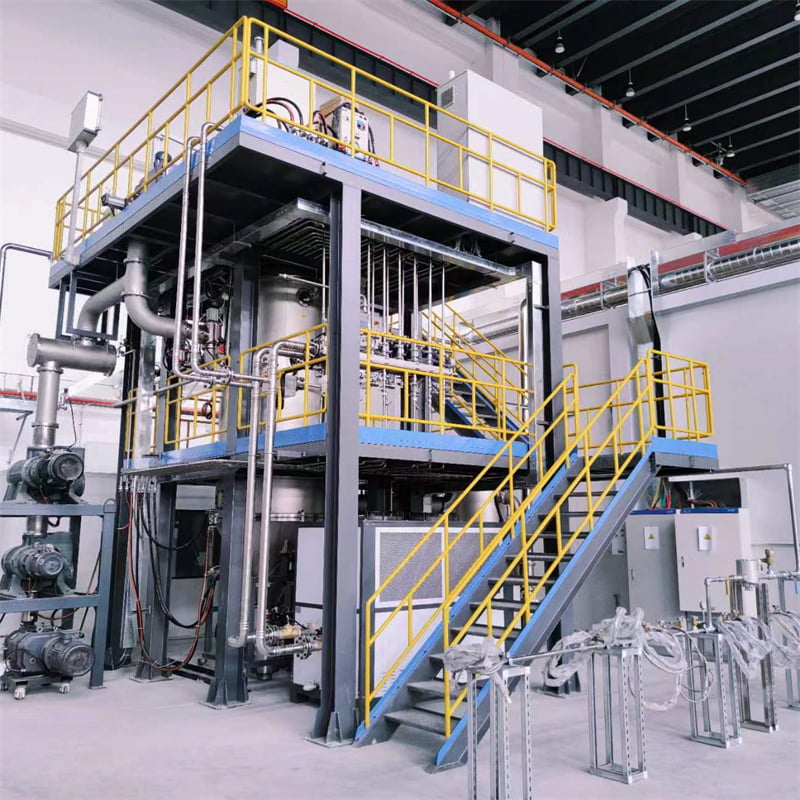
VANLIGA FRÅGOR
What methods are used for classifying atomized metal powders by particle size?
Common methods for classifying atomized metal powders include:
- Sieving – Stack of sieves with decreasing mesh size separates powder into size fractions
- Air classification – Centrifugal or cyclone separators classify fines from coarser particles
- Elutriation – Counterflow air/water fluidization allows fines to overflow by gravity
- Sedimentation – Particles settle downward in liquid at rates dependent on size/density
What safety precautions are required when handling atomized metal powders?
Key safety precautions when handling atomized powders:
- Use PPE – gloves, eye protection, filter masks to prevent skin/eye contact and inhalation
- Inert gas purging to prevent powder oxidation and dust explosions
- Proper grounding of powder handling equipment to dissipate static charges
- Avoid all ignition sources in powder processing areas
- Install dust collection equipment to capture airborne powder
- Conduct air monitoring to check for combustible dust levels
How are atomized metal powders handled and transported?
Typical powder handling steps:
- Collected in drums below cyclone separators or bag house filters
- Transported in sealed containers to prevent oxygen contact
- Pneumatic conveying via nitrogen or argon through pipelines
- Vacuum suction transfer into powder storage vessels
- Manual scooping/shovelling for small batches
- Automated mechanical conveyors for large volumes
Powders are kept sealed until ready for use to prevent contamination.
What steps are taken to prevent contamination during atomized metal powder production?
- Use high purity raw materials and feedstock
- Maintain inert atmosphere using argon/nitrogen
- Keep oxygen and moisture out through sealing
- Avoid contact between powder and tramp metal
- Frequent cleaning of equipment contacting powder
- Remove oil and grease residues using solvents
- Sieving/classification to isolate irregular particles
- Analysis to identify and eliminate impurity sources
What are the most common applications for stainless steel powders produced via atomization?
Typical applications of atomized stainless steel powders:
- Additive manufacturing – Selective laser melting, binder jetting
- Metal injection molding of small, complex parts
- Brazing pastes and solder fillers for joining
- Powder metallurgy pressing into porous filters
- Self-lubricating bearings manufacturing
- Production of stainless steel fibers for textiles
- Electrochemical machining/discharge machining electrodes
- Manufacture of stainless steel powder paints and coatings
How to choose inert gas supply systems for gas atomization?
Considerations for inert gas supply:
- Argon preferred over nitrogen for reactive metals like titanium
- High capacity gas storage tanks with backup cylinders
- Purity levels of 99.99%+ to prevent contamination
- Pressure regulators and flow meters for gas control
- Use of gas recovery systems to minimize waste
- Heated gas lines to prevent freezing of moisture
- Automated changeover and monitoring of gas parameters
- Proper alarms and interlocks for gas safety
Optimizing Atomized Metal Powder Characteristics
The properties of atomized metal powders can be optimized by controlling process parameters and atomization conditions:
Fördelning av partikelstorlek
| Metod | Effekt |
|---|---|
| Increase molten metal flow rate | Larger mean particle size |
| Use higher atomizer spinning speeds | Finer powder fraction increased |
| Lower molten metal pour temperature | Tighter particle size distribution |
| Classify powder via sieving/air separation | Remove oversize and undersize fractions |
Partikelform
| Metod | Effekt |
|---|---|
| Use gas or water atomization | More spherical particles |
| Lower metal pour rate | More spherical particles |
| Increase melt superheat temperature | Reduces satellites and irregular shapes |
| Anneal powders after atomization | Improves spherical morphology |
Pulverets renhet
| Metod | Effekt |
|---|---|
| Use high purity metal feedstock | Reduces metallic impurities |
| Add slag removal stage | Removes non-metallic inclusions |
| Increase inert gas purity | Reduces gaseous impurities |
| Use nickel-plated collection vessels | Lowers iron pickup |
| Sieve powder to remove satellites | Increases powder purity |
Pulverdensitet
| Metod | Effekt |
|---|---|
| Optimize atomization parameters | Uniform dense powder |
| Anneal powder after atomization | Removes internal voids and pores |
| Compress powder after atomizing | Work hardens and consolidates powder |
| Thermomechanical processing | Improves powder microstructure |
By optimizing the atomization process and powder handling steps, the characteristics of atomized metal powders can be tailored to meet application requirements.
Emerging Trends in Atomized Metal Powder Production
Some key emerging trends in atomized powder production technology include:
- Additive manufacturing is driving demand for spherical ultrafine powders below 30 microns. New nozzles and atomization methods are enabling such powders.
- Automation of powder production using Industry 4.0 concepts allowing remote monitoring, control and data-driven manufacturing.
- Hybrid atomization techniques combining aspects of gas, water and centrifugal atomization for better particle control.
- Microwave assisted heating of molten metal for faster, more uniform heating prior to atomization.
- Simulation and modelling of droplet formation dynamics leading to better understanding of atomization physics.
- Development of new alloys tailored specifically for additive manufacturing applications.
- Improved powder handling systems with integrated sieving, classification and storage.
- Continuous powder production processes instead of batch methods for higher throughput.
- Advanced control systems using AI and machine learning algorithms for automated optimization of atomization process.
- Specialized gas atomization nozzles optimized for reactive metals like titanium and aluminum alloys.
- Recycling and reusing scrap metal powders from AM processes using thermal treatments.
- In-process monitoring techniques such as infrared imaging for better powder quality control.
Slutsats
Atomized metal powders enable critical applications across automotive, aerospace, medical, 3D printing and other key industries. With increasing demand for high quality powders, metal atomization technology continues to evolve through new innovations in process intensification, automation, alloys development and advanced characterization techniques. By adopting the latest advances, powder producers can manufacture powders in an agile, cost-effective and sustainable manner.
Dela på
MET3DP Technology Co, LTD är en ledande leverantör av lösningar för additiv tillverkning med huvudkontor i Qingdao, Kina. Vårt företag är specialiserat på 3D-utskriftsutrustning och högpresterande metallpulver för industriella tillämpningar.
Förfrågan för att få bästa pris och anpassad lösning för ditt företag!
Relaterade artiklar

Högpresterande segment för munstycksvingar: Revolutionerande turbineffektivitet med 3D-utskrift i metall
Läs mer "Om Met3DP
Senaste uppdateringen
Vår produkt
KONTAKTA OSS
Har du några frågor? Skicka oss meddelande nu! Vi kommer att betjäna din begäran med ett helt team efter att ha fått ditt meddelande.

Metallpulver för 3D-printing och additiv tillverkning
FÖRETAG
PRODUKT
cONTACT INFO
- Qingdao City, Shandong, Kina
- [email protected]
- [email protected]
- +86 19116340731






